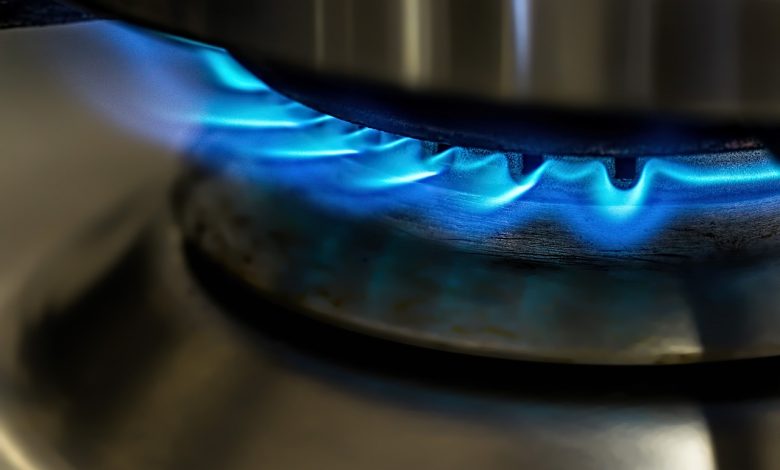Do Gas Stoves Create Harmful Levels of Indoor Air Pollution?

A Preferred Kitchen Appliance
Gas cooking stoves have long been one of the preferred kitchen appliances in households across the developed world. When compared to a modern electric stove, a gas stove provides instantaneous heat with just the flip of a switch. The flames provided by a gas stove allow food to be cooked more evenly and quickly, which is why gas stoves are often preferred by professional chefs. Similarly, when compared to an electric stove, there is no question about whether a gas stove is hot or cold or on or off. The physical presence of the flame and its ability to wrap around the bottom of the pan provides professional cooks and homeowners with a superior cooking experience. From a value standpoint as well, gas stoves typically cost less to operate than an electric stove if a home is already hooked up to a natural gas line. While the overall cooking experience and cost of using a gas stove may have an edge over an electric stove, some environmental and health experts are warning consumers of some potentially deleterious impacts from indoor gas stoves.

Health Concerns
An increasing number of scientific researchers and environmental health advocates have been publishing some alarming studies that have shown that gas stoves can create harmful levels of indoor air pollution. While outdoor air pollution has often been the focus of most people’s concerns, a major 2001 study of human activity found that Americans spent about 90 percent of their time inside rather than outside (Roberts, 2020). Therefore, since Americans do the vast majority of their breathing inside of their homes, it is imperative for researchers to better understand indoor air quality and its effect on human health. With this in mind, it is also important for the general public to understand that there is currently a litany of legal and regulatory standards that have been enacted to protect outdoor air quality; while conversely, there are almost no rules or regulations that protect Americans from indoor air pollution.

The Clean Air Act
In 1970, U.S. regulators took action against air pollution with the passing of the Clean Air Act. The development of this law has primarily been aimed at reducing the effect that burning fossil fuels has on air quality and human health. After its establishment, U.S. policymakers have used the regulatory authority of the Clean Air Act to serve as an environmental law to reduce air pollution from the U.S. transportation sector. In order to effectively meet air pollution objectives, the U.S. Environmental Protection Agency (EPA) has worked with policy officials to ensure that the Clean Air Act requires vehicles to have clean burning engines and emissions control devices. Furthermore, the Clean Air Act has been monumental in removing leaded gasoline from personal vehicles, requiring the use of reformulated fuels, implementing the adoption of ultra-low sulfur diesel, and reducing the threat of fuel leaks from gas stations.
Since its establishment, numerous amendments have been added to the Clean Air Act that have had a significant impact on human health and air quality. This historic environmental law established pollution control standards that have cut emissions from sulfur dioxide by 88 percent from 1990 through 2017 (Nunez, 2019). Additionally, the Clean Air Act also established numerous other standards that required power plants and industrial regions to significantly reduce sulfur dioxide and nitrogen oxides emissions. Overall, the Clean Air Act has been effective at covering six air pollutants, which include ground-level ozone, carbon monoxide, lead, particulate matter, nitrogen dioxide, and sulfur dioxide. Levels of these common air pollutants have collectively fallen by 74 percent since 1970 (Roberts, 2020).

Indoor Air Pollution
While the Clean Air Act has been effective at removing harmful outdoor air pollutants, the EPA has continued to warn that indoor levels of air pollution may be much higher that outdoor pollution. Most Americans are unaware that many of these indoor air pollutants could have origins within the kitchen, particularly from gas stoves. Cooking with natural gas produces nitrogen dioxide and a number of other common air pollutants, which can create numerous respiratory issues. Conversely, electric stoves don’t emit carbon monoxide and only produce a minimal amount of nitrogen dioxide. A growing consensus of scientists are finding that even a relatively small exposure to these pollutants can have a deleterious impact on long-term health. Shockingly, researchers from Carnegie Mellon University recently published a report that conveyed how small rollbacks in air quality regulations will contribute to 10,000 more deaths annually (Yglesias, 2019).
Natural gas is often labeled as the cleanest and most environmentally friendly fossil fuel. Therefore, the notion of natural gas being potentially toxic to cook with in the kitchen is surprising for many Americans. One of the reasons that natural gas is said to be so clean is because it emits nearly 50 percent less carbon dioxide than coal when it is burned (Yglesias, 2019). While natural gas is indeed cleaner than coal, researchers say it could still lead to harmful levels of indoor air pollution when used for cooking. According to the EPA, American homes with gas stoves exceed safe levels of nitrogen dioxide in 55 to 70 percent of cases (Copson, 2018). Moreover, a 2013 New York Times interview with a Berkeley Lab engineer revealed cooking with gas stoves can generate four times as much fine particulate matter than is typically found in the haze of Beijing, China (Smith, 2013).

Alarming Heath Impacts
A 2012 study published in the Journal of Environmental Health Perspectives used a system of epidemiological metrics to convey how the health impacts of indoor air pollution equate to a similar level of impact caused by car accidents (Copson, 2018). Moreover, the same study revealed that indoor air pollution could create more of an adverse health impact than radon and secondhand smoke. These impacts are often amplified if homeowners do not use venting hoods to filter out the pollutants created from burning natural gas. An Oregon State University study found that homes that do not use ventilation systems with gas stoves were more likely to have children with asthma, frequent wheezing, and even bronchitis (Kile et al, 2014). Children in homes with gas stoves were also found to be more likely to have chronic levels of inflammation.
Another study published in the Journal of Epidemiology examined whether gas cooking during pregnancy could lead to infant neurodevelopment issues. Between 2004 and 2008, Spanish researchers responded to concerns about neurodevelopmental impacts from air pollutants nitrogen dioxide and fine particulate matter by conducting a study of pregnant mothers in Spain. Following the birth of the children, the researchers conducted a comprehensive assessment using a process known as the Bayley Scales of Infant Development. From the age of 11 to 22 months old, the children were evaluated though the use of standardized neurodevelopmental test scores. The outcome of the four-year study concluded that cooking with natural gas could be associated with a decrease in neurodevelopmental test scores. This indicates that women should avoid using gas stoves while pregnant to ensure that children are born without developmental impacts. The researchers also stressed the importance of using an extractor fan or a hood vent if cooking with gas is unavoidable.
In addition to the Spanish study outlining how pregnant women should avoid exposure to gas stoves, there have been a number of other studies that say how children exposed to gas stove emissions could develop neurological issues later on in life. A 2014 study from the Journal of Frontiers in Human Neuroscience revealed the potential health challenges that could be experienced when exposed to natural gas. Studies have specifically linked nitrogen dioxide emissions from gas stoves with neurological issues such as Alzheimer’s, autism, and other developmental and behavioral health issues.

Mitigation Efforts
As a result of the plethora of evidence linking gas stoves to health issues, scientists have been studying how to mitigate these concerns. A team of researchers at the U.S. Department of Energy’s Lawrence Berkeley National Laboratory have been evaluating opportunities to remove harmful air pollutants that are emitted when cooking with gas stoves. The researchers have a unique perspective on the issue, calling it a battle against physics. Since cooking with a gas stove involves a controlled combustion, the team of scientists at Lawrence Berkeley National Laboratory have been evaluating opportunities to better control this combustion to remove the possibility of particulate matter and other forms of pollution entering the lungs.
Richard Corsi, a professor and engineer at the University of Texas at Austin, has been advocating for more federal guidance and financial support for researchers evaluating methods to reduce the risks associated with gas cooking. Federal financing and policy initiatives have long been geared towards programs and regulations that focus on outdoor pollution related to wastewater, drinking water, air quality, and sites containing hazardous waste. Corsi says, “We haven’t had that regulatory driver for the indoor environment, and yet the indoor environment is probably the most important environment in terms of human health” (Smith, 2013). Jennifer Logue, an air quality specialist at the Lawrence Berkeley National Laboratory, has said that while the research is conclusive related to the adverse impacts caused by breathing in emissions from gas stoves, Americans shouldn’t make drastic changes to their cooking habits. Instead, Logue has advocated for more awareness about the importance of proper ventilation systems in the kitchen.

Ventilation Standards
The development of science-based ventilation guidelines and standards could ease concerns about the emissions of cooking with natural gas. However, some environmentalists and even entire communities want to ban gas stoves from being included in new homes. After hearing stats that conveyed how 12 million Californian’s are exposed to excessive pollutants from gas stoves, the City of Berkeley, California has proposed an initiative to ban gas stove hookups in new homes. Councilwoman Kate Harrison labeled the proposal as being both important for reducing indoor air pollution and climate change. Some communities have been moving towards efforts to implement an all-electric future by cutting out all appliances that run on fossil fuels. Moreover, numerous advocacy groups like the Rocky Mountain Institute, Physicians for Social Responsibility, Mothers Out Front, and the Sierra Club have been pushing for more regulations on gas stoves.
According to the U.S. Energy Information Administration, the widespread adoption of natural gas has now overtaken coal in terms of the overall contribution to global carbon emissions (Gillis and Nilles, 2019). A third of all natural gas emissions come as a result of gas that is burned in commercial buildings and residential homes. State and local governments continue to allow gas companies to spend billions to install infrastructure to support gas hookups. Meanwhile, environmental and health advocates continue to express their concerns about locking in a future characterized by natural gas. With no federal requirements on the books requiring ventilation systems for new gas stoves, it’s clear that the fight over natural gas in the kitchen will continue into the foreseeable future.
Sources
Barboza, T. (2013). “Cook with a gas stove? You could be breathing polluted air, study says.” The Los Angeles Times.
Bittman, M. (2013). “Is Natural Gas ‘Clean’?” The New York Times.
Copson, J. (2018). “Deleterious Health Effects of Gas Stove Cooking.” Medium.
Gillis, J., and Nilles, B. (2019). “Your Gas Stove Is Bad for You and the Planet.” The New York Times.
Huber, J. (2018). “Use your range hood for a healthier home, advises indoor air quality researcher.” Stanford University School of Medicine.
Kile, M., et al. (2014). “A cross-sectional study of the association between ventilation of gas stoves and chronic respiratory illness in U.S. children enrolled in NHANESIII.” Oregon State University.
Nunez, C. (2019). “Acid rain, explained.” National Geographic.
Roberts, D. (2020). “Gas stoves can generate unsafe levels of indoor air pollution.” Vox.
Smith, P. (2013). “The Kitchen as a Pollution Hazard.” The New York Times.
Vrijheid, M., et al. (2012). “Indoor air pollution from gas cooking and infant neurodevelopment.” The Journal of Epidemiology.
Yglesias, M. (2019). “Air pollution is much more harmful than you know.” Vox.



